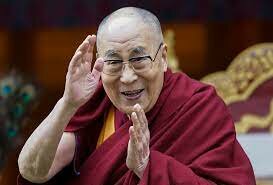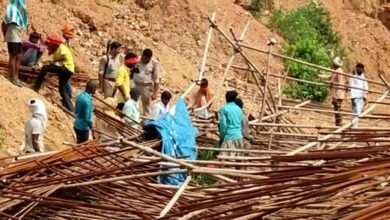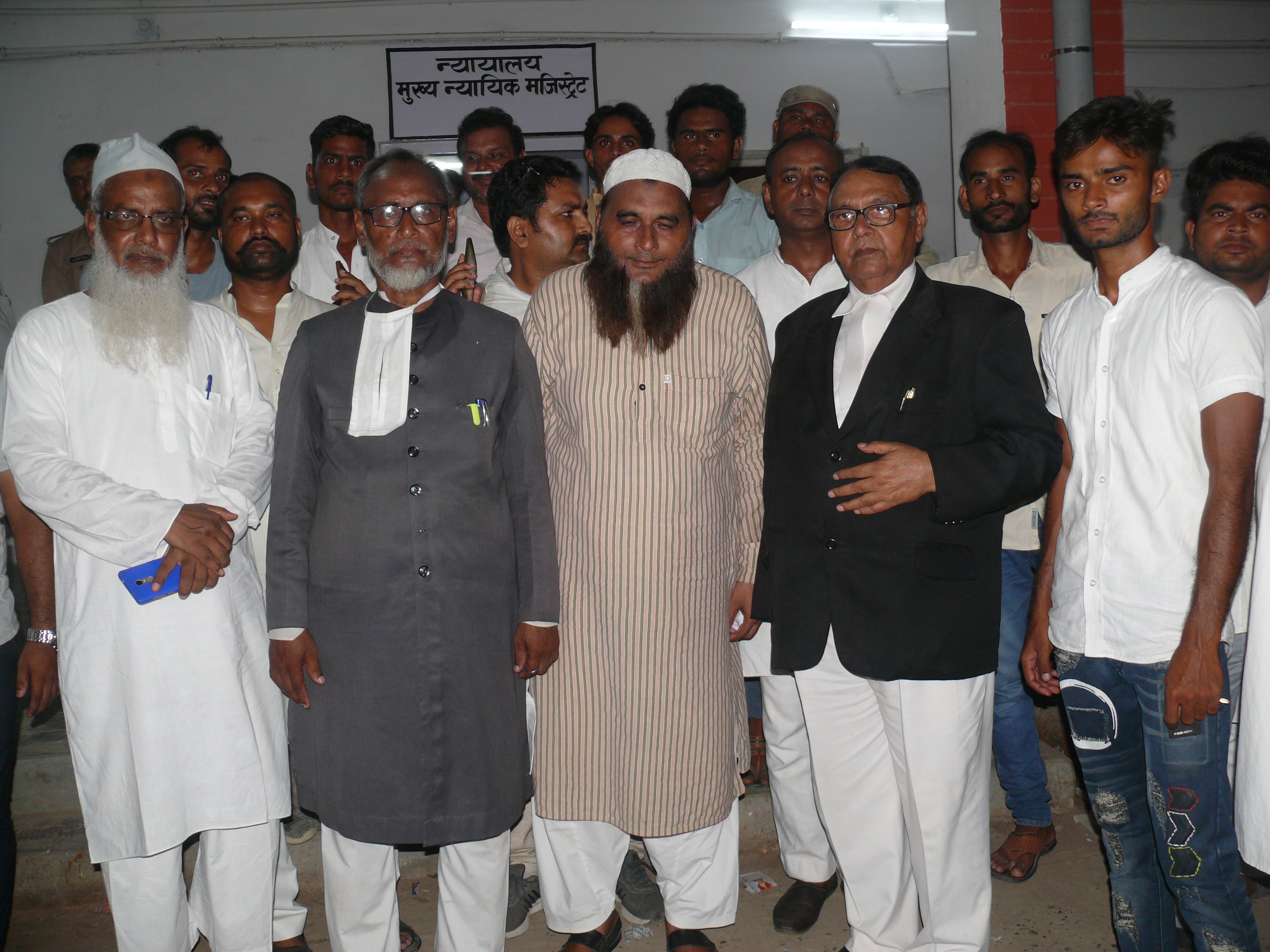Non-violence and compassion – on my birthday this is my gift: Dalai Lama
PM Modi spoke on phone, Delhi CM Kejriwal takes to Twitter to convey his greetings

By SHRI RAM SHAW
New Delhi, 6 July: On his 86th birth anniversary today, His Holiness the Dalai Lama said that “non-violence and compassion is my gift. I myself am committed to non-violence and compassion until my death. This is my offering to my friends. I hope my friends will also keep non-violence and compassion for rest of your lives. So firstly, this is like a report about my life. And secondly, all my human brothers and sisters should keep these two – non-violence and compassion until your death.”
He further said, “I’m just one human being. Many people really show they love me and many people actually love my smile. In spite of my old age, my face is quite handsome. Many people really show me genuine friendship. I want to express my deep appreciations of all my friends who have really shown me love, respect and trust. I want to express my thanks. For myself, I can assure you that for the rest of my life I am committed to serving humanity and working to protect the climate condition.”
“Since I became refuge and now settled in India, I have taken full advantage of India’s freedom and religious harmony. I want to assure you that for the rest of my life, I’ll be fully committed to this work. I really appreciate the Indian concept of secular values, not dependent on religion, such as honesty, karuna (compassion) and ahimsa (non-violence). So, on my birthday this is my gift,” Dalai Lama added.
Prime Minister Narendra Modi spoke on phone to His Holiness the Dalai Lama to convey greetings on his 86th birthday. “We wish him a long and healthy life.”
Expressing his greetings and gratitude, Delhi Chief Minister Arvind Kejriwal took to Twitter to wish His Holiness the 14th Dalai Lama on his 86th birthday. He said, “We consider ourselves fortunate to be inculcating your values in our Delhi government school students through the medium of Happiness Curriculum.”
The 14th Dalai Lama, Tenzin Gyatso, turns 86 on July 6. It has been over six decades since he started living in India. He calls himself a “son of India” and somebody who has lived the longest in India as a “guest”. His birthday celebrations, each year, in Himachal Pradesh’s Dharamshala had always been one of the biggest events for the Tibetan community.
However, due to the ongoing Covid-19 pandemic, this year the festivities shall not be held in Tsuglagkhang (popularly known as the Dalai Lama temple/ monastery) in McLeodganj, Dharamshala. Rather, the Kashag (Cabinet) – the highest executive office of the Central Tibetan Administration – has asked people in an advisory not to hold any congregations at all.
His Holiness 14th Dalai Lama, was born at Taktser, a small hamlet in Amdo Province’s Kumbum region on 6 July 1935 to Choekyong Tsering and Dickyi Tsering. Raised under the protection of Palden Lhamo, Lhamo Dhondub was recognized as the undisputed reincarnation of the Great 13th Dalai Lama and brought to Lhasa at the age of five to be enthroned in the Potala palace.
While undergoing his monastic studies, the Chinese government began illegally invading Tibet’s Kham and Amdo regions. In 1950, the Tibetan troops stationed at Chamdo suffered defeat under the marauding Chinese army. As a result of the invasion, the Tibetan political administration, economy, and the general Tibetan society underwent a severe crisis, like an oil-exhausted lamp flickering in its last dying flame.
At such a critical period in Tibet’s history, His Holiness the Dalai Lama, at the tender age of sixteen, was compelled by circumstances to shoulder the spiritual and temporal leadership of Tibet.
In 1951, under threats of further Chinese military invasion, the seventeen-point agreement was thrusted upon the Tibetan people. However, His Holiness the Dalai Lama’s efforts to initiate reforms in Tibet was curtailed by the Chinese government.
Barely a few years after taking the political responsibility of Tibet, His Holiness the Dalai Lama embarked on an official visit to China and India in 1954 and 1956 respectively, and met the leaders of the two Asian giants. Based on his experiences and observations of the two different forms of political systems in Democratic India and Communist China, His Holiness the Dalai Lama made earnest efforts to co-exist harmoniously with the Chinese in abidance with the seventeen-point agreement for eight long years.
However, in March 1959, sensing an inevitable threat to the life of His Holiness from the Chinese troops stationed in Lhasa, His Holiness the Dalai Lama, followed by about B0,000 Tibetans, escaped into exile in India, Nepal and Bhutan.
After coming into exile, most Tibetans initially worked as road construction laborers in India. Despite the enormous hardships of food, clothing and shelter in the early days of exile, under the vision and guidance of His Holiness the Dalai Lama, gradually established Tibetan settlements, schools and monasteries on the land leased by the Indian government.
These institutions now serve as the custodian of Tibetan national identity. In 1960, His holiness the Dalai Lama brought about a major democratic reform in the Gaden Phodrang government by instituting the first Tibetan parliament composed of representatives from all three provinces and religious schools of Tibet. This laid the foundation of the nascent Tibetan democracy in exile, and it was done with the foresight to empower the Tibetan public to perform its own political and administrative functions in the long run.
In 1959, 1961 and 1965, consequent to emphatic international lobbying on Tibet, the United Nations General Assembly passed three resolutions on Tibet. In 1963, His Holiness made a proclamation of the Constitution for a Future Tibet. In 1967, in the heat of China’s devastating Cultural Revolution, His Holiness embarked on his first international visit from exile to Thailand and Japan.
In 1974, following a visit to Europe in 1973, His Holiness discussed with the then exiled Tibetan leadership to explore ways to resolve the Sino-Tibetan conflict through dialogue based on the Middle Way Approach. In 1979, while His Holiness was on a visit to the US, China was going through a brief respite from the political turmoil of the past due to a series of liberal reforms.
Coinciding with these liberal reforms, Deng Xiaoping expressed a desire to negotiate and the first Sino-Tibetan contact was established after a gap of twenty years. This renewed Sino-Tibetan contact led to several exploratory talks and fact-finding missions to Tibet.
It also allowed reunion of Tibetans inside and outside Tibet which enhanced restoration of Tibetan monasteries and reinvigoration of the monastic community which had been undermined by the Cultural Revolution. It also led to a brief period of revival of Tibetan Buddhism, Tibetan language education, and Tibetan arts, culture and tradition.
All these are a clear outcome of the passionate efforts initiated by the10th Panchen Lama Choekyi Gyaltsen as well as other Tibetan spiritual leaders, scholars, and the general Tibetan public.
As a result of the Five Point Peace Plan and the Strasbourg Proposal made by His Holiness the Dalai Lama at the US Congress in 1987 and the European Parliament in 1988 respectively, and his firm commitment to resolve the Tibet issue through the mutually-beneficial Middle Way Approach, His Holiness garnered immense international respect and recognition.
For these efforts, His Holiness the Dalai Lama was also awarded the Nobel Peace Prize which heralded an upsurge in international support for Tibet. The year 1991 was also marked as the International Year of Tibet, and in 1997 a special coordinator for Tibetan issues was appointed in the US state department. In 2002, the Tibetan Policy Act was adopted by the US government.
Two years earlier, a resolution on Sino-Tibetan dialogue was passed in the European Parliament on the birthday of His Holiness the Dalai Lama. Various other democratic nations along with their government and public have expressed strong support and solidarity with the Tibet issue.





